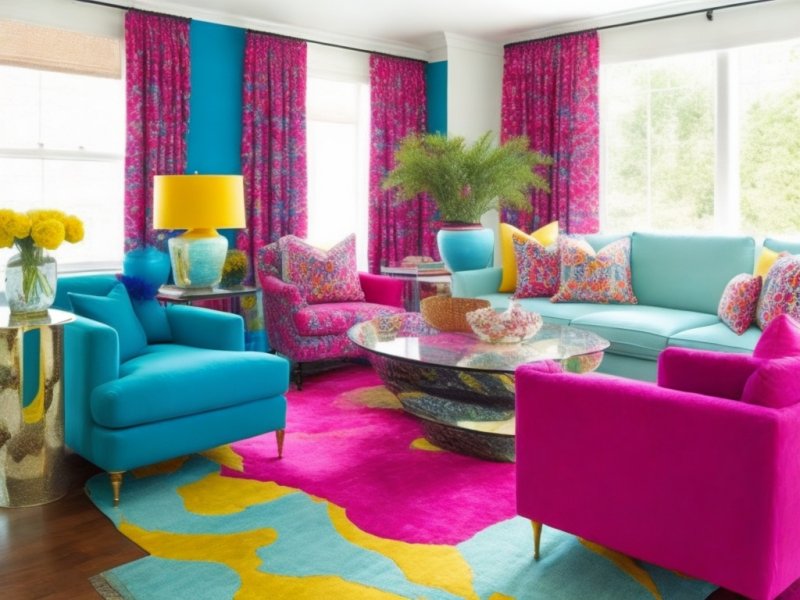
Introduction:
When it comes to designing our homes, one element that often takes center stage is color. The choice and use of colors can significantly impact the mood, atmosphere, and overall aesthetic of a residential interior. From calming neutrals to bold and vibrant hues, colors have the power to transform a space and make it truly inviting. In this blog post, we will explore the significance of color in residential interiors and provide tips on how to create vibrant and inviting spaces through the strategic use of color.
1. Understanding the Psychology of Color:
Colors have the ability to evoke emotions and affect our psychological state. It is essential to understand the psychological impact of different colors to create a desired atmosphere in our homes. For instance, warm colors like red, orange, and yellow can energize and create a sense of warmth, while cool colors like blue and green can promote relaxation and tranquility. By considering the psychology of color, you can choose the right hues to set the desired mood in each room of your home.
2. Choosing the Perfect Color Palette:
Before diving into painting or selecting furniture, it is crucial to establish a cohesive color palette for your residential interior. A well-thought-out color scheme can tie all the elements of a room together and create a harmonious and inviting atmosphere. You can opt for complementary colors, which are opposite each other on the color wheel and provide a vibrant and energetic contrast. Analogous colors, which are adjacent on the wheel, create a more soothing and harmonious feel. Experiment with different combinations and find a color palette that resonates with your personal style and the mood you want to create in each space.
3. Creating Visual Interest with Accent Colors:
Accent colors play a crucial role in adding visual interest and making a room come alive. These are the colors that stand out from the overall color palette and draw attention to specific elements or areas in a room. For example, you can use bold accent colors for accessories such as throw pillows, artwork, or a statement piece of furniture. This technique not only adds pops of color but also creates focal points that can make a space feel vibrant and inviting.
4. Balancing Colors with Neutrals:
While vibrant colors can inject life and energy into a residential interior, it's important to strike a balance by incorporating neutrals. Neutrals such as white, beige, gray, or even muted pastels provide a calm and timeless backdrop that allows other colors to shine. Use neutral hues for larger surfaces like walls and flooring, and then add splashes of color through furniture, textiles, and accessories. This approach creates a visually balanced space that is both inviting and visually appealing.
5. Light and Color Interaction:
Natural and artificial lighting can significantly influence how colors appear in a space. It is crucial to consider lighting when choosing colors for your residential interior. Take into account the direction and intensity of natural light throughout the day, as well as the type and placement of artificial lighting fixtures. Warm light can enhance warm colors, while cool light can emphasize cool tones. Experiment with lighting options to find the perfect balance that showcases the vibrancy and beauty of your chosen colors.
Conclusion:
Color has the power to transform our residential interiors into vibrant and inviting spaces. By understanding the psychology of color, selecting a well-balanced color palette, incorporating accent colors, and considering lighting, we can create a personalized and visually appealing home. So, embrace the power of color and let it breathe life into your living spaces, making them truly vibrant, inviting, and reflective of your unique style.
Share This News